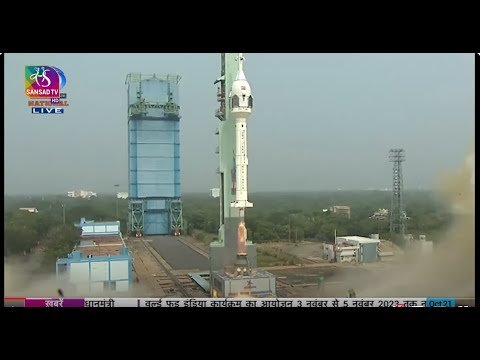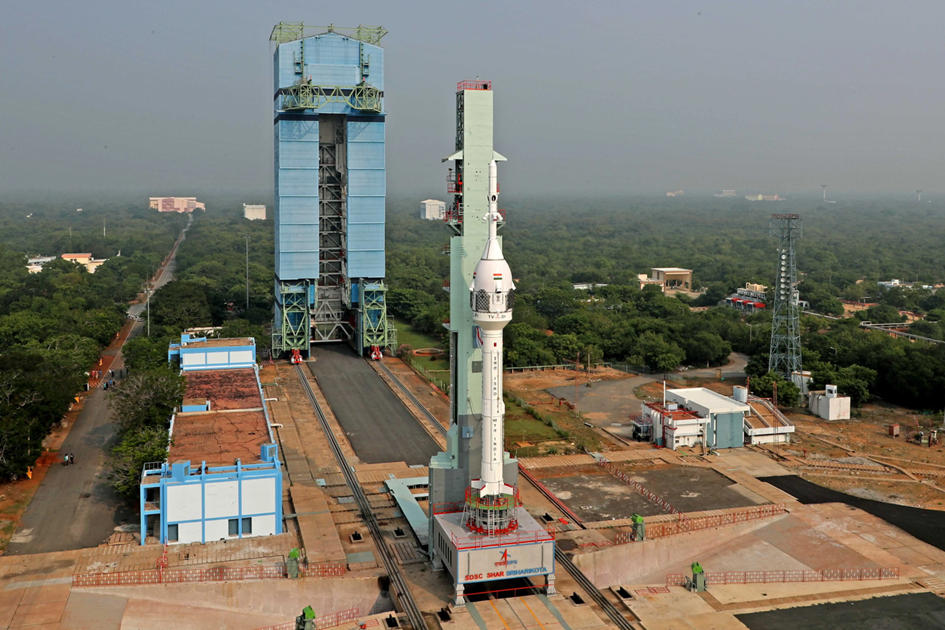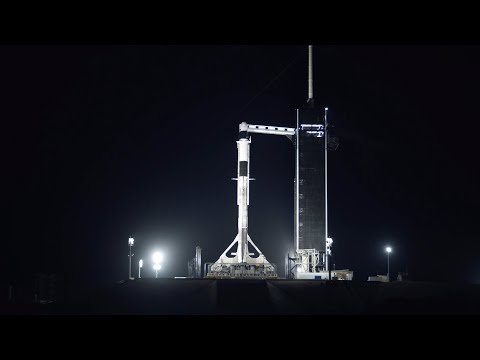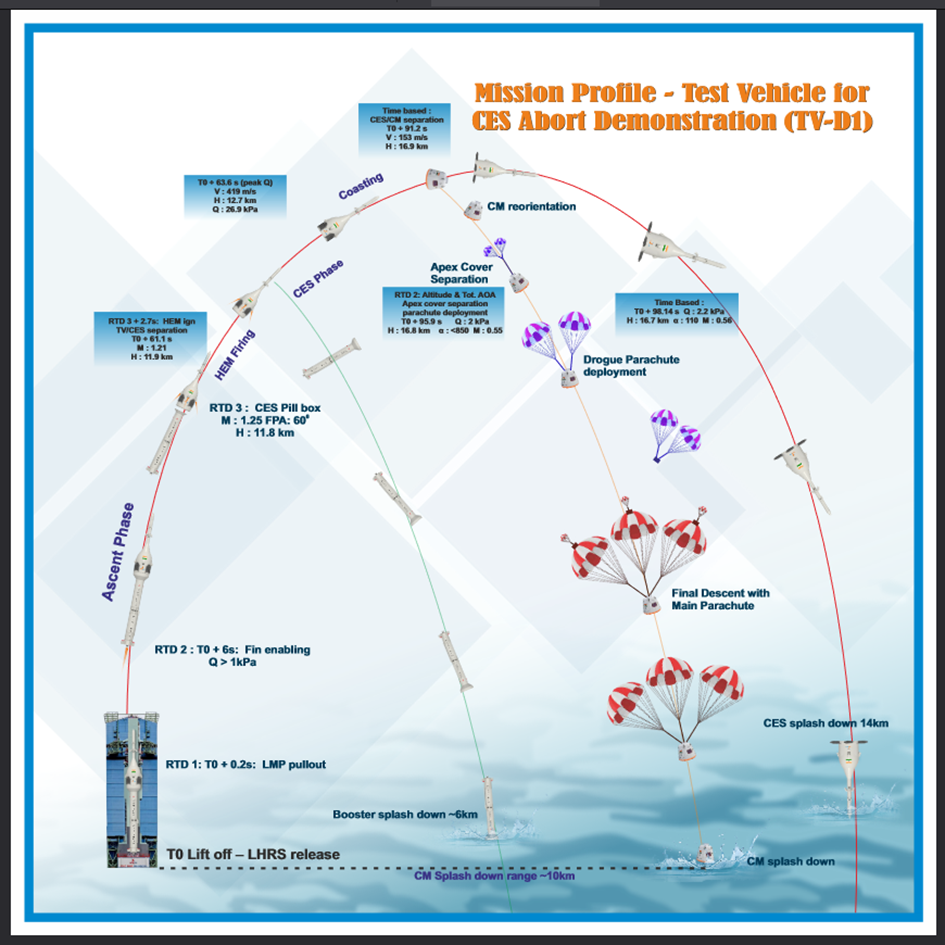Update: the automatic launch sequence triggered a hold in the last second because engine ignition did not happen in the required timeframe.
Update 2: ISRO quickly identified the reason for the automatic hold and successfully completed the test:
Sansad TV: ISRO launches test flight of Gaganyaan TV-D1 from Satish Dhawan Space Centre in Sriharikota
ISRO (Indian Space Research Organization) is taking another step in building out their space capacities. This time it will be an in-flight abort test of the Gaganyaan crew capsule (TV-D1).
Source: isro.gov.in
The capsule is designed to eventually carry three people.
ISRO will be conducting six more test flights until the first crewed mission in the first half of 2025.
This test is designed to prove that the crew can be rescued under the most extreme flight conditions.
For comparison, the SpaceX Crew Dragon in-flight escape test:
Crew Dragon | In-Flight Escape Demonstration Recap
In contrast to SpaceX, India chose a tractor puller system based on solid rockets instead of liquid fueled rockets on the capsule itself which pushes the crew module away in case of emergency.
Here is Tim Dodd explaining the differences between these systems:
Why have SpaceX, Boeing & Blue Origin ditched abort towers?
The main advantages of a solid motor puller system are simplicity, reliability and power.
Mission Profile:
Crew Module and Crew Escape System will separate from the rocket at an alitude of 12 km at a velocity of Mach 1,2. The Crew Module will separate from the Crew Escape System at an Altitude of 17 km and deploy parachutes for a soft water landing.
Source: TV-D1 Brochure
Where to watch:
Official ISRO live stream: Gaganyaan TV-D1 Mission - Test flight from Satish Dhawan Space Centre (SDSC) SHAR, Sriharikota
Official mission page: Gaganyaan TV-D1 Mission
Scott Manely: How India Developed World Class Rockets From Humble Beginnings
Useful links to stay up to date on launches:
Spaceflightnow.com: Launch Schedule
Nextspaceflight: Launches
Everyday Astronaut: Prelaunch Previews
Space News:
NASA Spaceflight nasaspacefight.com
TMRO: YouTube
Track Starlink satellites: https://satellitemap.space/
Subreddit: https://www.reddit.com/r/Starlink




